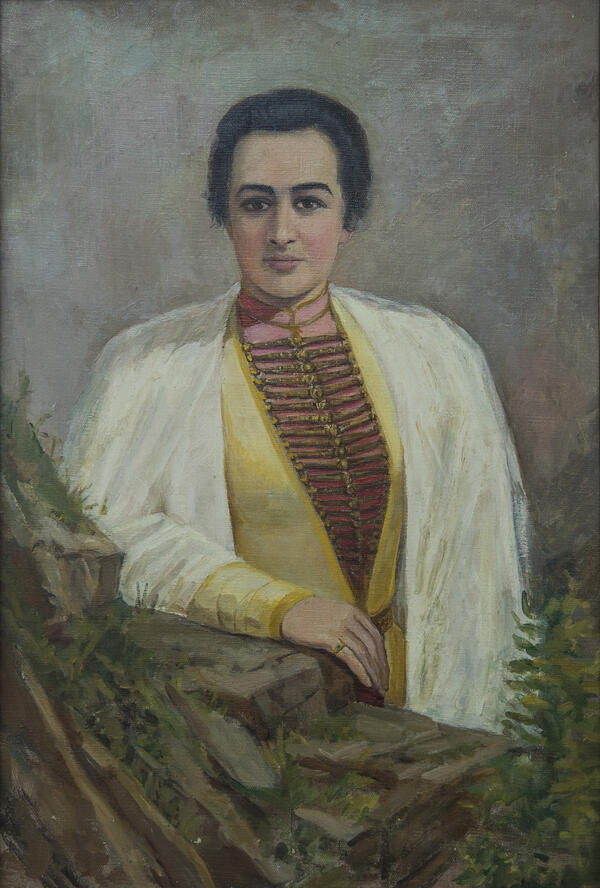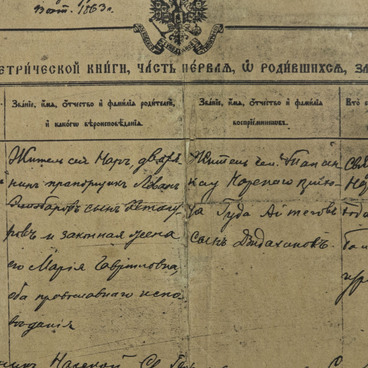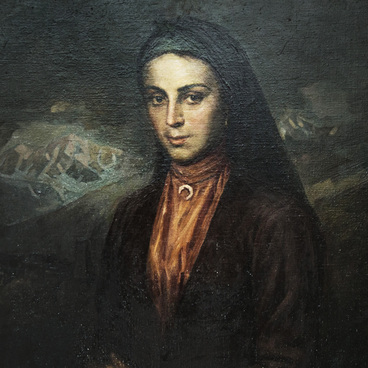Anna Tsalikova was fond of music: she sang, danced, and even knew how to play the accordion and piano. A charming girl with a fine sense of humor, she was spoiled by all the attention she received from her fans. Kosta Khetagurov, a family friend, also fell in love with her. He repeatedly confessed his strong feelings to her and offered his hand and heart. However, for a long time she did not give the poet any clear answer: neither positive nor negative. This uncertainty in the relationship brought real pain to Kosta. According to the assumptions of contemporaries, Anna did not feel deep feelings for Khetagurov, but the girl was flattered by the fact thatshe was the muse of a well-known artist and poet of that time.
In 1893, Kosta was living in Stavropol, working for the newspaper ‘North Caucasus’. He confessed to his beloved in one of the letters: ‘It is difficult to imagine to what fervor I gave myself up to the variousactivities there… But, alas! Neither the newspaper, every line of which I seemed to experience with every fiber of my soul, nor painting, which I always enjoy to the point of exhaustion, nor all sorts of charitable, scientific, and artistic institutions and meetings, in which I always took a most feverish part in, nor balls, nor picnics, nor carousals — nothing could obscure from me the dear view. I’ve again started moping around. At times, I even imposed on myself the malevolent idea of marrying the first Agrafena or Matryona I came across and creating the most petty, petty-bourgeois life for myself, at least to poison the painfully sweet dream of meeting you again…’
Kosta began to paint Anna’s portrait in Vladikavkaz in 1890, while he was living in the Tsalikov’s house. She often refused to pose for him, but it was only coquetry. The poet presented the painting to Anna in 1897 as a birthday gift. The girl didn’t like the color of her dress in her portrait. Kosta was deeply disappointed, but fulfilled the whim of his beloved and changed the color of her outfit.
For all of his years of acquaintanceship with Anna Tsalikova, the poet never lost hope of evoking a response from her, but he was well aware of his situation. He wrote: ‘My grief is a very special kind of grief: my social-societal position is so “precarious” that any attempt to hitch the fate of another living, thinking being to my own is “madness”… Fate marked me with neither youth, nor beauty, nor wealth, nor a brilliant career. As a poor, lowly, Ossetian man, if I dare to take this risky step, it is only because I love you so unspeakably, so infinitely, another such poor, lowly, Ossetian girl.’
Far from his homeland, Kosta was acutely aware of his solitude and powerlessness. However, Anna did not try to support or comfort him. She only sent him a telegram with the words ‘greetings from Athos! ’, which the poet took very painfully.
In the end, Khetagurov realized that Anna would never return his love, and ceased attempting to propose to her. Tsalikova continued to work as a teacher and traveled. She never married and died in 1914 after an operation on her kidney.
In 1893, Kosta was living in Stavropol, working for the newspaper ‘North Caucasus’. He confessed to his beloved in one of the letters: ‘It is difficult to imagine to what fervor I gave myself up to the variousactivities there… But, alas! Neither the newspaper, every line of which I seemed to experience with every fiber of my soul, nor painting, which I always enjoy to the point of exhaustion, nor all sorts of charitable, scientific, and artistic institutions and meetings, in which I always took a most feverish part in, nor balls, nor picnics, nor carousals — nothing could obscure from me the dear view. I’ve again started moping around. At times, I even imposed on myself the malevolent idea of marrying the first Agrafena or Matryona I came across and creating the most petty, petty-bourgeois life for myself, at least to poison the painfully sweet dream of meeting you again…’
Kosta began to paint Anna’s portrait in Vladikavkaz in 1890, while he was living in the Tsalikov’s house. She often refused to pose for him, but it was only coquetry. The poet presented the painting to Anna in 1897 as a birthday gift. The girl didn’t like the color of her dress in her portrait. Kosta was deeply disappointed, but fulfilled the whim of his beloved and changed the color of her outfit.
For all of his years of acquaintanceship with Anna Tsalikova, the poet never lost hope of evoking a response from her, but he was well aware of his situation. He wrote: ‘My grief is a very special kind of grief: my social-societal position is so “precarious” that any attempt to hitch the fate of another living, thinking being to my own is “madness”… Fate marked me with neither youth, nor beauty, nor wealth, nor a brilliant career. As a poor, lowly, Ossetian man, if I dare to take this risky step, it is only because I love you so unspeakably, so infinitely, another such poor, lowly, Ossetian girl.’
Far from his homeland, Kosta was acutely aware of his solitude and powerlessness. However, Anna did not try to support or comfort him. She only sent him a telegram with the words ‘greetings from Athos! ’, which the poet took very painfully.
In the end, Khetagurov realized that Anna would never return his love, and ceased attempting to propose to her. Tsalikova continued to work as a teacher and traveled. She never married and died in 1914 after an operation on her kidney.



